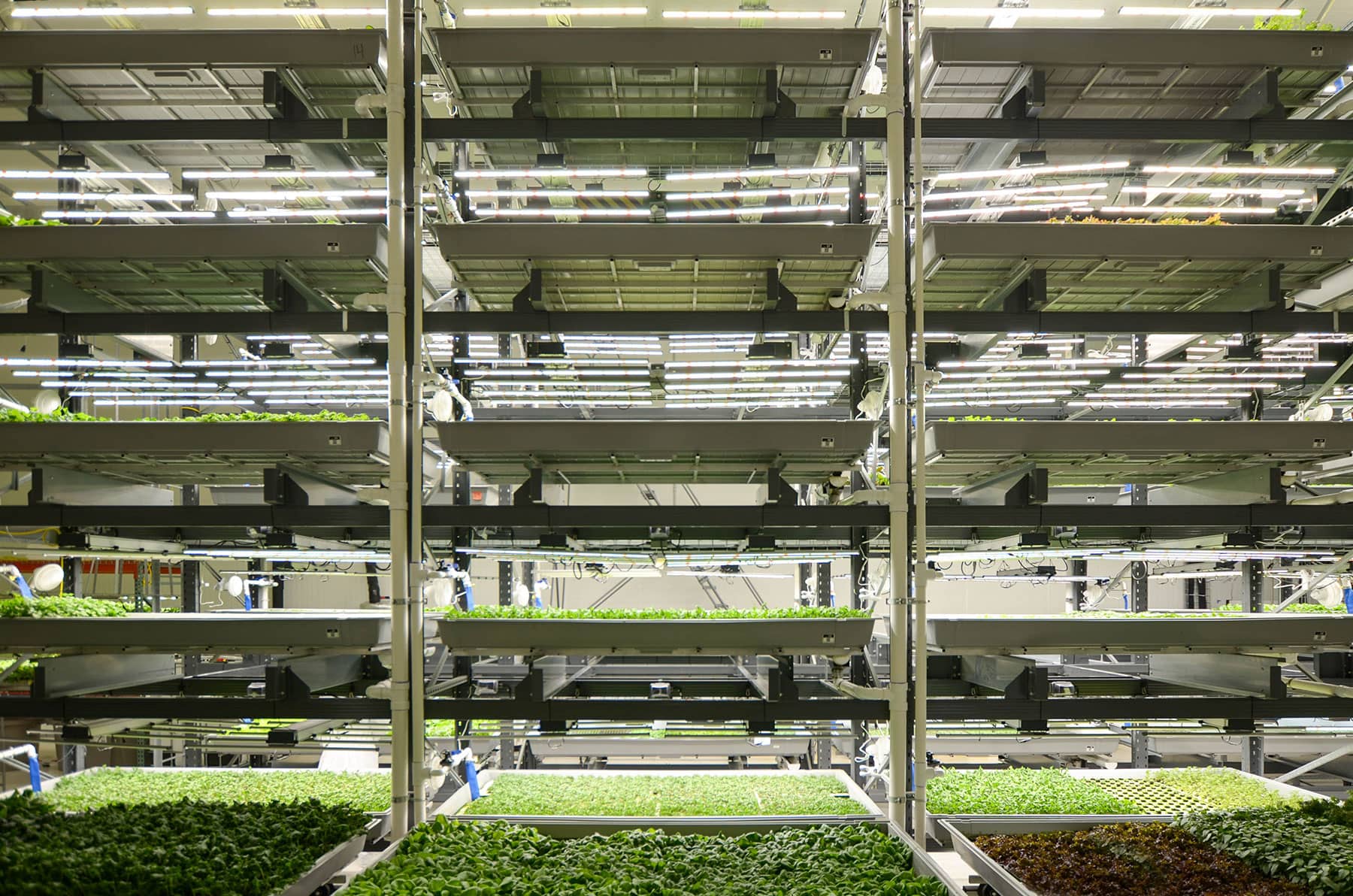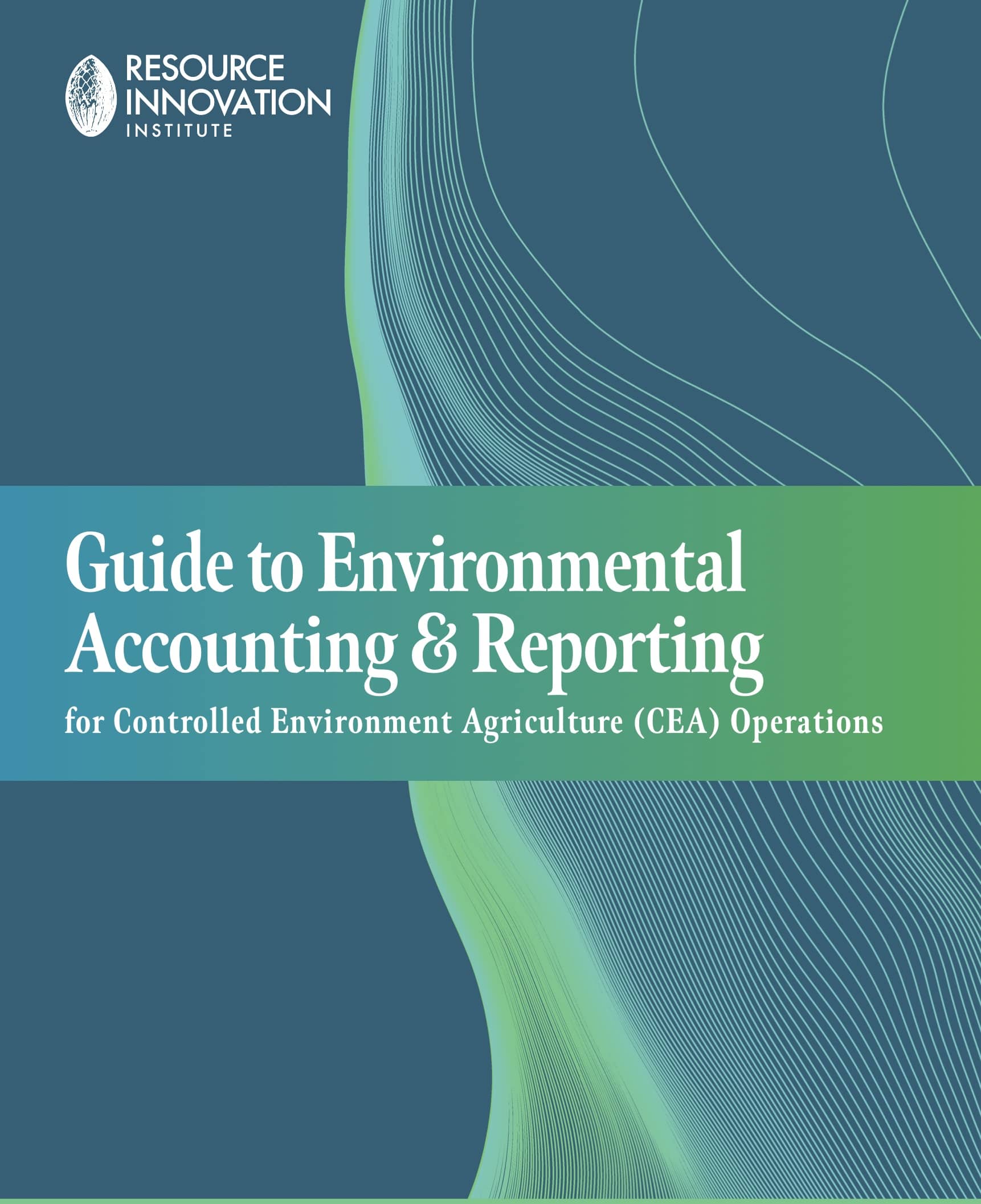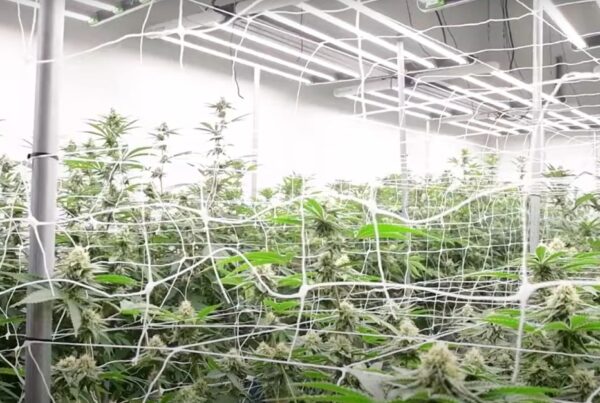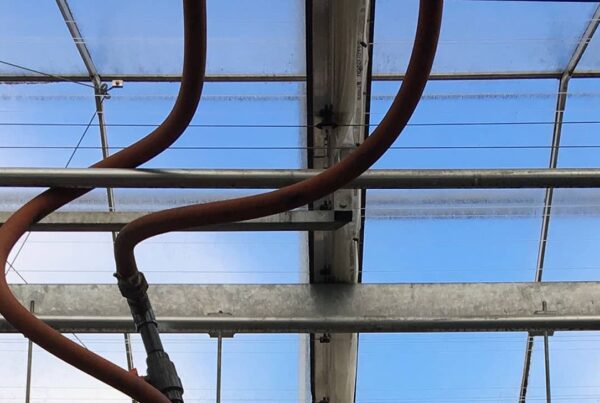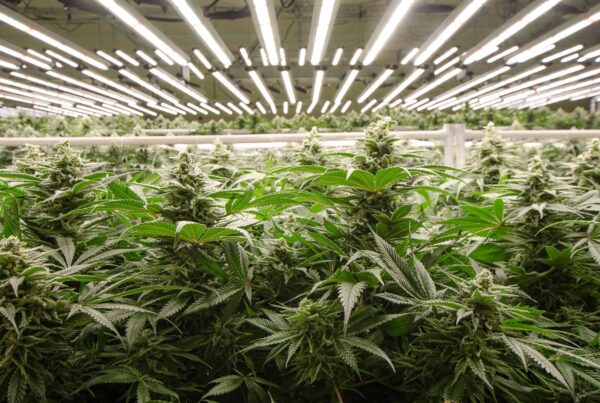Understanding your CEA operation’s complete carbon footprint through emissions tracking can identify process and system improvements, help reach ESG goals, and inform stakeholders.
“Renewable energy should be the bedrock of CEA, and frankly should be the baseline for all of agriculture.” – Colin O’Neil, Senior Director of Public Policy & Social Impact, Bowery Farming
A recent Washington Post article claimed in its headline that “[indoor] farms are remaking the produce market — at a cost to the planet.” Whether or not that statement is hyperbole or truthful is certainly a discussion topic. Yet the fact remains that indoor farms and controlled environment agriculture businesses are being closely watched by utilities, governments, environmental groups, and neighboring communities.
This scrutiny makes carbon emissions accounting and reporting a valuable tool for CEA businesses to push back against high-resource use narratives and to identify areas of improvement within the business and its supply chain.
Getting a complete understanding of a CEA business’ emissions footprint goes beyond looking at crop-only inputs, and requires an evaluation of upstream and downstream suppliers and vendors, as well as an investigation into energy sourcing. It is not a task for the faint of heart, as it requires a thoughtful analytical approach and participation from all stakeholders (or as close to all as can be mustered).
Scoping Things Out
A business’s carbon emissions can be bucketed into three categories, called scopes. As noted in RII’s “Guide to Environmental Accounting & Reporting,” the Environmental Protection Agency (EPA) defines Scope 1 emissions as “direct greenhouse (GHG) emissions that occur from sources that are controlled or owned by an organization.”
Scope 1 emissions are fairly straightforward to track. These include emissions from fuel combustion in boilers, furnaces, and vehicles, as well as fugitive emissions from leaked refrigerants. Refrigerants, especially synthetics such as hydrofluorocarbons (HFCs), have very high global warming potential (GWP) ratings, sometimes up to 12,000 times higher than CO2 (which has a GWP of 1).
Scope 2 emissions are “indirect GHG emissions associated with the purchase of electricity, steam, heat, or cooling,” per the EPA. Unless producing their power onsite, most CEA operations can collect this data from their utility company.
Scope 3 emissions can often be the most difficult to track as they require collaborating with different vendors to collect the data, and sometimes those vendors do not have that data available. As described by the EPA, scope 3 emissions are “the result of activities from assets not owned or controlled by the reporting organization, but that the organization indirectly affects in its value chain.” This includes (but is not limited to) fertilizers, packing materials, substrates, and embodied carbon (encompassing the total CO2 emissions generated throughout the facility lifecycle, including production, operation, and disposal of system components).
Documenting the specific methodology used to track these emission scopes is important for transparency, as individual operations may have slightly nuanced ways to classify these emissions. For example, supplemental CO2 delivered to crops may fall under scope 1 or 3 emissions. There is no definitive method to report these, making documentation key to understanding a business’s accounting approach.
Benefits of Emissions Tracking
As mentioned, collecting, analyzing, and reporting on this data both internally and externally requires a Herculean effort. In an interview with RII, Colin O’Neil, Senior Director of Public Policy & Social Impact at Bowery Farming, a New York-based indoor farming company with active operations in Pennsylvania, Maryland, and New Jersey, said “unless you’ve got a full-time person to do this, don’t try and add this to someone’s already full plate without the help of a great outside consultant.” O’Neil also was a member of the CEA Footprint Project Committee that helped create RII’s Guide to Environmental Accounting & Reporting.
In 2022, Bowery commissioned both a product-level life cycle assessment (LCA), as well as a corporate-level greenhouse gas (GHG) inventory analysis to get an in-depth view of its contribution to carbon emissions. RII’s Guide to Environmental Accounting & Reporting notes that “LCA calculates the total environmental impact associated with the upstream production and downstream consumption of a physical product,” while GHG “quantifies the emissions associated with ongoing business operations at a corporate level.
Conducting both emissions study types “gave us the detailed bottom-up analysis of how a Bowery product stacks up in more of an apples-to-apples comparison to other products,” O’Neil said, adding that the GHG inventory in particular “gave us much more of a top-down view of where are the big hotspots and opportunities for improvement across the entire company.”
O’Neil noted a few internal benefits to this accounting, including validating certain operational decisions such as using 100% renewable energy sources. “If we didn’t rely on renewables, energy would be a much larger part of our carbon footprint,” he said, adding that Bowery improved energy efficiency in its farms by over 35% in the past year alone. “Renewable energy should be the bedrock of CEA, and frankly should be the baseline for all of agriculture.”
Another benefit O’Neil identified was Bowery gaining insight into often forgotten downstream processes, such as waste management. An LCA “forces stakeholders internally to take a more holistic point of view on the business and understand the environmental impacts that you might not typically think of,” he said. “Not only did it spotlight that there were some unforeseen parts of our business that actually accounted for a larger than expected share of our carbon footprint at the product level, but addressing those also allowed us to reduce cost and operating expenditures.”
Bowery found additional external benefits to conducting these emissions accounting reports. In addition to supporting its internal ESG program, LCA and GHG reports help the company better engage with vendors. Increasingly, O’Neil remarked, retail partners are “asking more questions about their suppliers’ scope 1, 2, and 3 emissions,” and having that data ready means the company can support emissions accounting efforts at the retail level. Many investors also are keen to know more about a company’s carbon emissions as they evaluate what to include in their investment portfolios, especially ESG-focused funds.
Once data is collected, analyzed, and reported, the next step is for businesses to take action using those insights, an initiative often easier stated than undertaken. CEA companies need to weigh how emissions accounting fits into their broader efforts, O’Neil said. “I am sure there are thousands upon thousands of really great sustainability reports that have been paid for and written, that have never been read and just sit on a dusty digital shelf. It’s important to be asking ourselves “What is this in service of?”
Ultimately, emissions accounting should provide insight into the central challenge the CEA industry is grappling with: how to produce more food using fewer resources.


